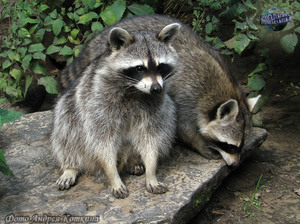The llama is a mammal, a relative of camels and Alpaca, as they all belong to the same family of Camelids. At the present time this animal indispensable in husbandry.

Their wool has incredible quality, so valued all over the world, and the Lama – a great help in transporting the cargo. But valued in the llama not only that.
History
The ancestors of animals lived in North and South America millions of years ago. It is known that llamas were domesticated around four thousand years ago South American Indians – the inhabitants of Peru. Ancestors was the guanaco, which lived (and still live) in the mountains of Peru called the Andes.
The Indians noticed that these animals can significantly make their lives easier: giving good wool, meat, to transport heavy loads. And that’s the way already domesticated the llama people long before the arrival of horses in South America in the last Millennium was the only assistant in the transportation of goods.
At the present time, the lamas are themselves lamas and their ancestors, guanacos living in the wild to this day in South America.
Description
Lama – herbivore adapted to life high in the mountains. Reaches a height of 120-130 cmand weight 70-80 pounds. Thanks to a long neck rise to the top comes right up to two meters! The color is very diverse: white, grey, dark, brown, Golden, with or without spots. They live for about 20 years. Lahm is also possible to note an elongated, thin neck, large eyes and pointed ears.
Unlike camels, our inhabitants of the Andes are characterized in that they have no hump. Also, unlike relatives, they are usually found in cool places or mountainsbecause they have adapted to traveling in the mountains double hooves to the fingertips. But they, like camels, can start to spit if something is not to their liking.
This herd animals, so they need to contain at least two or three individuals.

Sexually Mature females reach age at first year of life and males on the third. The male has a harem of two, three or more females who give birth to usually one cub after 11-12 months of gestation.
The descendants of the inhabitants of the Andes are found in captivity in North and South America, Europe, Australia. Thanks to the adaptability to life in the mountains were spread in the Alps (Europe). They are also often seen on the lowlands in temperate latitudes.
Use
- As mentioned above, these furry cute animals remain indispensable in the transport of goods, especially through the steppe/mountain surface. Noteworthy is the fact that the Lama for unknown reasons, never carry weight, more their own. But this pales before their ability to walk as much as a few tens of kilometers per day. To this day in remote for the Parking-Lam is used as a cargo pack animals.
 Llama wool is popular worldwide due to its quality, the property to preserve its warmth and softness. It is known that their wool on the superior quality of the wool of many other animals, such as sheep. It is very soft, gentle and does not require special care, so clothes from the wool of llamas can be worn for a really long time. Advantage is its exoticism.
Llama wool is popular worldwide due to its quality, the property to preserve its warmth and softness. It is known that their wool on the superior quality of the wool of many other animals, such as sheep. It is very soft, gentle and does not require special care, so clothes from the wool of llamas can be worn for a really long time. Advantage is its exoticism.- Very useful quality of these animals is the simplicity in food. Eat mainly hay, grass, vegetables, fruit, grain. Llamas are popular because many people know that animals eat in a day food much less than, for example, horses. Like camels, these animals can also very long time not to use the liquid.
- Of llama meat is also eaten. It is noteworthy that for this purpose suitable only for young males. Females do not even use for milking.
- An incredible advantage of all domesticated animals of South America of the family of Camelids is their peacefulness and calm nature. Llamas are friendly and curious, unpretentious. Rarely get sick, if you follow the rules of care and properly fed (as often as possible fresh vegetables, plants).
A bit about Alpaca
Why, in this article we have never mentioned the Alpaca as members of the genus Lam? The fact that Alpaca for a long time attributed to this genus, because they believed that they are descendants of the guanaco. In 2001, however, found out that their ancestor is actually a kind of vicuna.

Cause prolonged delusion served the resemblance, almost the same habitats and that alpacas and llamas can cross, and then be born cubs, called wario.
- Alpaca also appeared with the Indians in the Andes, about six thousand years ago from the vicuña, who to this day live in South America. Vicuna is very similar to the guanaco, but are more small in size. And the alpacas different from llamas a long and soft coat (15 inches) and smaller.
- Alpacas are bred exclusively for wool, an incredible quality. They live in the Andes in Peru, Bolivia and Northern Chile. They don’t spit on people if they get angry, unlike their relatives – descendants of the guanaco, but can spit between them. They are distinguished also by the absence of front teeth, so Alpaca tear the grass lips.


